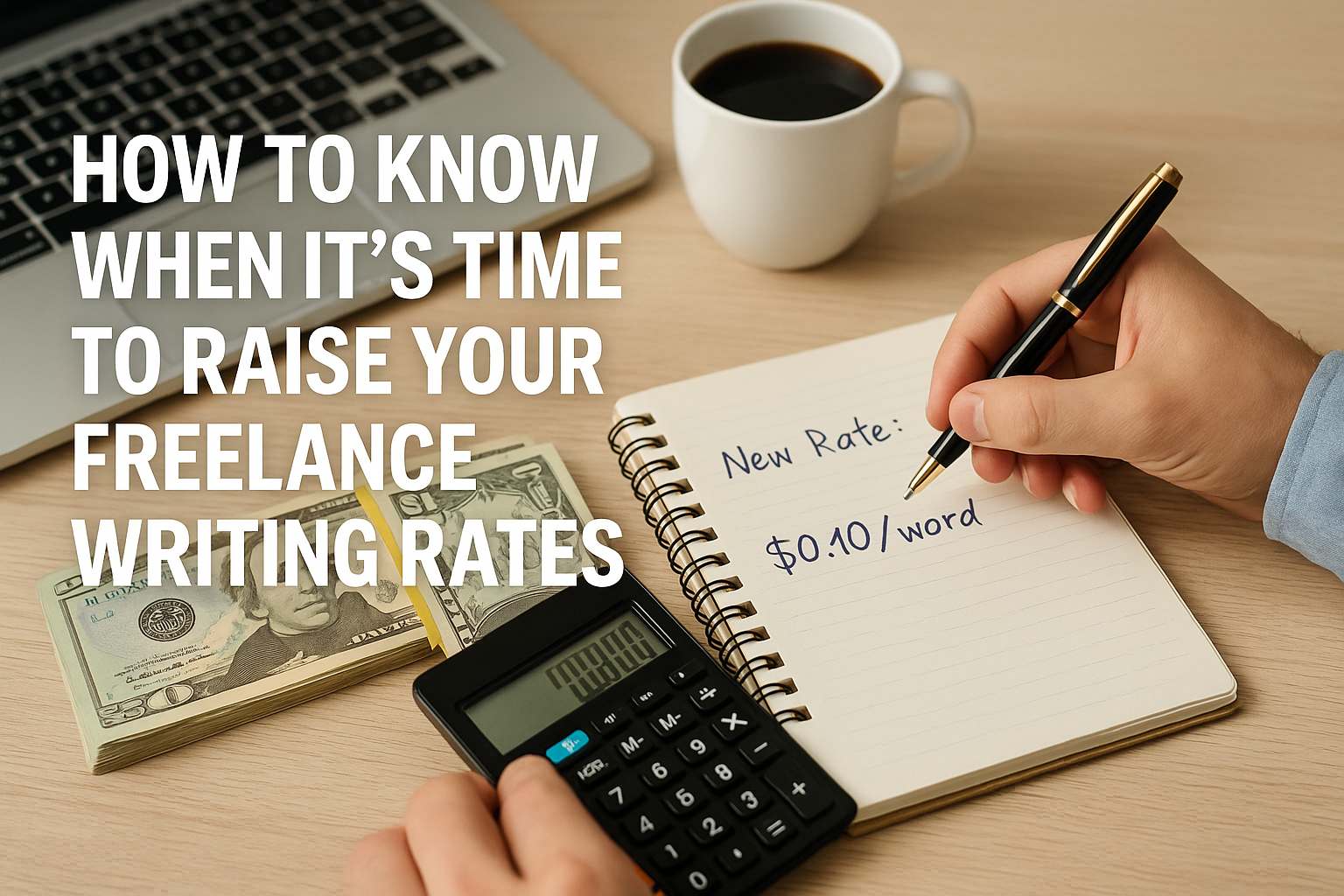As a freelance writer, your income isn’t limited by a fixed salary — but it is limited by what you charge. One of the biggest milestones in any freelancer’s career is learning when (and how) to raise your rates.
Many writers undercharge for too long because they fear losing clients. But raising your rates — when done strategically — can actually lead to better clients, more respect, and greater financial stability.
In this final article da nossa série, você vai aprender quando é o momento certo para aumentar seus preços, como comunicar isso aos clientes, e como fazer isso com confiança.
Why Raising Your Rates Matters
Your rates are more than just numbers — they reflect:
- Your value and experience.
- Your positioning in the market.
- Your ability to grow a sustainable business.
If you never raise your rates, you may find yourself:
- Working more hours to make ends meet.
- Resenting your clients.
- Attracting clients who undervalue your skills.
Charging fairly helps you serve your clients better — and stay in business long-term.
If you’ve been freelancing for 6–12 months or more and have completed multiple projects, your skills are improving — and your rates should reflect that.
Experience includes:
- Completing a range of client projects.
- Learning new tools or formats.
- Receiving positive feedback.
- Understanding your niche more deeply.
Clients aren’t just paying for words — they’re paying for the time and trial it took you to get this good.
Sign #2: You’re Fully Booked (and Saying No)
If you’re turning down work or consistently booked weeks in advance, it’s a strong sign that demand for your services is higher than your supply.
Use this as a trigger to:
- Increase your base rate by 10–20%.
- Test higher rates with new inquiries.
- Replace lower-paying clients with better ones.
Raising your rates allows you to earn more without taking on more work.
Sign #3: You’re Getting Great Results for Clients
If your writing is helping clients achieve measurable results — such as:
- Increased traffic.
- Better engagement.
- More leads or conversions.
- Strong brand presence…
…you’re not just a writer — you’re a business asset. And assets deserve to be paid accordingly.
Start gathering data, testimonials, or case studies to support your value when increasing rates.
Sign #4: Your Current Rates Don’t Cover Your Needs
If you’re working full-time as a freelancer but still:
- Struggle to cover expenses.
- Have no savings or financial buffer.
- Feel pressure to take on too many clients…
…it’s time to revisit your pricing.
Use this formula to calculate your minimum viable rate:
- Determine your monthly income goal.
- Divide by the number of billable hours or projects.
- Adjust for taxes, time off, and overhead.
If your current rates don’t match this — they need to rise.
Sign #5: You’re Delivering More Than Expected
If clients are constantly praising your work, giving you repeat projects, and referring you to others — you’ve likely outgrown your current rate tier.
Also, if you find yourself:
- Doing strategy or SEO without charging for it.
- Providing faster turnaround than agreed.
- Including extras like keyword research or formatting…
…it’s time to charge for the full value of what you provide.
How to Raise Your Rates With New Clients
Raising rates is easiest with new clients, because there’s no existing expectation.
To do it:
- Quote confidently — don’t apologize or justify.
- Use value-based pricing (focus on what the client gets, not just how long it takes).
- Test a slightly higher rate than your comfort zone.
Example:
“My rate for SEO blog posts is $350 per article, which includes research, optimization, and two rounds of revisions.”
You may be surprised how many clients say yes without hesitation.
How to Raise Rates With Existing Clients
This can feel trickier — but many clients will understand.
Steps:
- Give advance notice (e.g., 2–4 weeks).
- Frame it around growth or added value.
- Show appreciation for the relationship.
- Offer a transition period, if needed.
Example:
“I’ve really enjoyed working together, and I’m so proud of what we’ve created so far. As my business has grown, I’m updating my rates to reflect the quality and depth of service I provide. Starting next month, my rate for blog posts will increase to $X. I’d love to continue collaborating, and I’m happy to discuss how we can make it work.”
Some clients may decline — and that’s okay. You’ll create space for better-aligned opportunities.
How Often Should You Raise Rates?
There’s no perfect schedule, but a good rule of thumb is:
- Every 6–12 months, or
- After a major growth milestone (like a big client win, skill upgrade, or strong result).
Even a 10–20% increase makes a difference over time — and builds your confidence in the process.
Final Words: Charge What You’re Worth — and Then Some
Raising your rates isn’t just about making more money. It’s about recognizing the value of your time, your craft, and your contribution to your clients’ success.
You don’t need permission to level up. Start where you are, evaluate what you offer, and take one confident step forward. The clients who value you will stay — and the ones who don’t weren’t right for you anyway.
